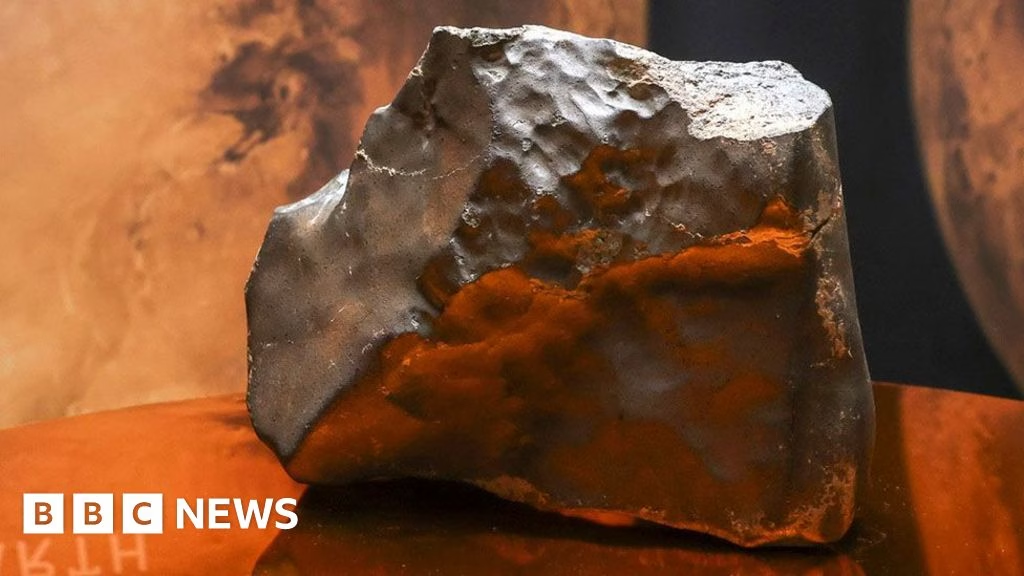<
div id=””>
.webp)
EPA
“Brazen! It is brazen!” Prof Paul Sereno says down the phone line from Chicago.
He makes no effort to disguise his anger that a rare meteorite from Mars discovered two years ago in the West African nation of Niger ended up being auctioned off in New York last month to an unnamed buyer.
The palaeontologist, who has close connections with the country, believes it should be back in Niger.
This millions-years-old piece of the Red Planet, the largest ever found on Earth, fetched $4.3m (£3.2m) at Sotheby’s. Like the buyer, the seller was kept anonymous.
But it is unclear if any of this money went to Niger.
Fragments of extraterrestrial material that have made their way to Earth have long inspired reverence among humans – some ending up as religious objects, others as curiosities for display. More recently, many have become the subject of scientific study.
The trade in meteorites has been compared to the art market, with aesthetics and rarity affecting the price.
At first, there was a sense of awe surrounding the public display of this extraordinary Martian find – less than 400 of the 50,000 meteorites discovered have been shown to come from our planetary neighbour.
The photographs taken at Sotheby’s of the 24.7kg (54lb) rock – appearing in the lights to glow silver and red – compounded this feeling.
But then some people started asking questions about how it ended up under the auctioneer’s hammer.
Not least the government of Niger itself, which, in a statement, “expressed doubts about the legality of its export, raising concerns about possible illicit international trafficking”.
.webp)
Reuters
<
div data-component=”text-block” class=”sc-3b6b161a-0 dEGcKf”>
Sotheby’s strongly disputes this, saying the correct procedures were followed, but Niger has now launched an investigation into the circumstances of the discovery and sale of the meteorite, which has been given the scientific and unromantic name NWA 16788 (NWA standing for north-west Africa).
<p class="sc-9a00e533-0 hxuGS">Little has been made public about how it ended up at a world-renowned auction house in the US.</p>
<p class="sc-9a00e533-0 hxuGS">An Italian academic article published last year said that it was found on 16 November 2023 in the Sahara Desert in Niger's Agadez region, 90km (56 miles) to the west of the Chirfa Oasis, by a meterorite hunter, whose identity remained undisclosed.</p>
<p class="sc-9a00e533-0 hxuGS">Meteorites can fall anywhere on Earth, but because of the favourable climate for preservation and the lack of human disturbance, the Sahara has become a prime spot for their discovery. People scour the inhospitable landscape stretching across several countries in the hope of finding one to sell on.</p>
<p class="sc-9a00e533-0 hxuGS">According to the Italian article, NWA 16788, was sold by the local community to an international dealer and was then transferred to a private gallery in the Italian city of Arezzo. </p>
<p class="sc-9a00e533-0 hxuGS">The University of Florence's magazine described the person as an "important Italian gallery owner". </p>
<p class="sc-9a00e533-0 hxuGS">A team of scientists led by Giovanni Pratesi,
Source: https://www.bbc.com/news/articles/cly3q635n4no?at_medium=RSS&at_campaign=rss










